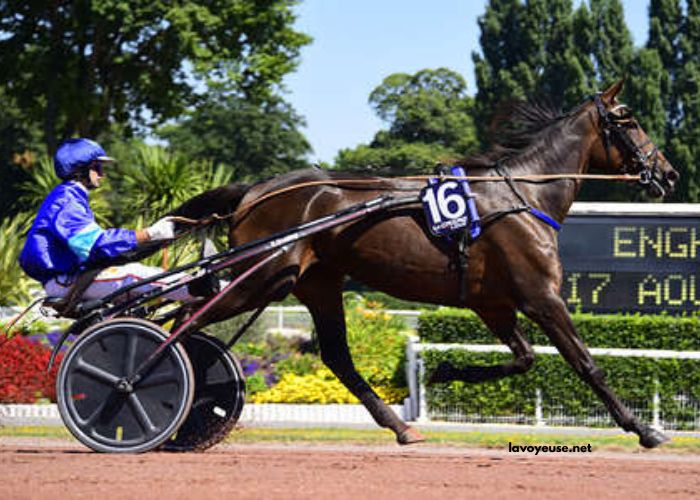In the world of horse racing, Le Triangle Du Quinte holds a special place as a strategy used by experienced bettors to improve their chances of predicting the top finishers in the Quinté+ races. The Quinté+ is a French horse race with five top finishers, and the goal is to predict the exact order of these finishers. Le Triangle Du Quinte helps bettors organize their picks in a more structured manner, improving their odds.
Le Triangle Du Quinte is a valuable tool for anyone participating in Quinté+ betting. It involves a combination of analyzing horse form, race conditions, and previous performances, which can be distilled into a powerful selection method. By understanding and applying this strategy, bettors are more likely to make informed decisions and boost their potential returns. This article will delve deeper into how Le Triangle Du Quinte works, its key principles, and how bettors can effectively use it to their advantage in the world of horse racing.
What Is Le Triangle Du Quinte and How Does It Work?
Le Triangle Du Quinte is a method of selecting horses in the Quinté+ race by combining three essential factors that contribute to a horse’s likelihood of finishing in the top five. The first factor is the horse’s form and recent performance. Bettors analyze how the horse has performed in previous races, its finishing positions, and whether the horse is improving or declining in form.
The second factor in Le Triangle Du Quinte is the jockey and trainer. A strong combination of a skilled jockey and an experienced trainer can significantly influence a horse’s chances of success. By selecting horses with top-notch jockeys and trainers, bettors increase their chances of picking a winner in the Quinté+ race.
Finally, the third element of Le Triangle Du Quinte involves race conditions, such as the track surface, distance, and weather. Some horses perform better on specific types of tracks or conditions, so understanding these aspects is crucial in making an informed decision.
By combining these three factors – horse form, jockey and trainer, and race conditions – Le Triangle Du Quinte allows bettors to create a more calculated and strategic approach to Quinté+ betting, improving their odds of winning.
How Can Bettors Use Le Triangle Du Quinte to Improve Their Betting Strategy?
Bettors looking to use Le Triangle Du Quinte to their advantage should first begin by analyzing the recent performances of horses in the Quinté+ race. This involves studying the horse’s past finishes, including any patterns that might suggest it is in good form. Horses that have consistently finished in the top positions, particularly in similar races, should be prioritized as potential top finishers in the Le Triangle Du Quinte strategy.
Next, bettors should take a close look at the jockey and trainer combinations. A successful jockey-trainer partnership often leads to better results, so it is crucial to assess these relationships when applying Le Triangle Du Quinte. Bettors should look for horses with jockeys and trainers who have a history of success in Quinté+ races or similar events.
Race conditions are another key factor in Le Triangle Du Quinte. Different horses excel under different conditions, such as specific track surfaces or weather conditions. Bettors who take the time to understand how these variables impact horse performance will have an edge when selecting their top five finishers for the Le Triangle Du Quinte.
Incorporating these factors into a betting strategy will allow bettors to make more informed and targeted choices, increasing their chances of winning. Le Triangle Du Quinte is not about relying on luck; it is about using data and analysis to make the best possible predictions.
Why Is Le Triangle Du Quinte So Popular Among Experienced Bettors?
Le Triangle Du Quinte is popular among experienced bettors because it offers a structured and logical approach to selecting horses in the Quinté+ race. In a race where predicting the exact order of finishers can seem like a daunting task, Le Triangle Du Quinte provides a formula that helps simplify the decision-making process. By considering multiple factors – horse form, jockey and trainer, and race conditions – bettors can make more accurate and informed predictions.
Moreover, Le Triangle Du Quinte is not based on guesswork or random selection. It is a method that relies on data, analysis, and proven strategies, which appeals to serious bettors who want to maximize their chances of winning. The strategy allows bettors to avoid relying on superficial or arbitrary factors, focusing instead on key performance indicators that have a real impact on the outcome of the race.
Another reason for its popularity is that Le Triangle Du Quinte can be applied to a wide range of races, not just the Quinté+ event. Once bettors master the method, they can use it to improve their predictions in other horse races as well. The versatility of the strategy makes it valuable for anyone who wants to make their betting decisions more strategic and less reliant on chance.
What Are the Main Mistakes to Avoid When Using Le Triangle Du Quinte?
While Le Triangle Du Quinte is a powerful strategy for predicting top finishers in Quinté+ races, there are some common mistakes that bettors should avoid. One of the biggest errors is relying too heavily on a single factor, such as the horse’s recent form. While horse form is important, it is just one piece of the puzzle. Overlooking the jockey-trainer combination or race conditions can lead to missed opportunities or incorrect selections.
Another mistake is failing to properly assess race conditions. Some bettors may ignore how the track surface, weather, or distance affects a horse’s performance, focusing only on the horse’s form and the jockey’s reputation. However, certain horses perform better under specific conditions, and understanding this can be the difference between winning and losing when using Le Triangle Du Quinte.
Finally, bettors should avoid placing bets without fully analyzing all three components of the strategy. Le Triangle Du Quinte is most effective when all factors – form, jockey and trainer, and race conditions – are considered together. By neglecting one aspect, bettors risk making less informed predictions and lowering their chances of success.
How Can New Bettors Learn and Apply Le Triangle Du Quinte?
For new bettors, learning and applying Le Triangle Du Quinte might seem overwhelming at first, but it becomes easier with practice and attention to detail. The first step is to familiarize oneself with the key components of the strategy: horse form, jockey-trainer combinations, and race conditions. Bettors should start by watching races, reading form guides, and studying how different horses perform under various conditions.
New bettors should also take advantage of expert analyses and tips that can help them understand how to apply Le Triangle Du Quinte effectively. Many websites and publications provide insights into upcoming Quinté+ races, which can be useful when trying to predict the top finishers.
Once new bettors have gained some experience, they can begin testing Le Triangle Du Quinte with smaller bets before scaling up. By refining their approach and learning from each race, bettors can eventually master the strategy and improve their chances of success in the Quinté+ races.
Conclusion
In conclusion, Le Triangle Du Quinte is a proven strategy for bettors looking to improve their success in the Quinté+ races. By focusing on three key factors – horse form, jockey and trainer combinations, and race conditions – bettors can make more informed and strategic decisions, increasing their chances of selecting the top five finishers. While it may take some time to fully master Le Triangle Du Quinte, it offers a structured approach that can lead to more consistent and profitable betting.
By avoiding common mistakes, carefully analyzing each race, and continuously learning from their experiences, bettors can use Le Triangle Du Quinte to their advantage and boost their potential winnings in horse racing. This method is not just a fleeting trend but a strategic tool that can help bettors gain a deeper understanding of the sport and improve their overall betting success.

